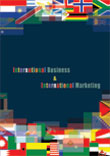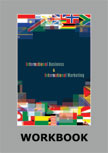Singapore: Past Perfect, Future Tense?




|
|
ICMR HOME | Case Studies Collection
Case Details:
Case Code : BENV008
Case Length : 27 Pages
Period : 1959-2006
Pub Date : 2006
Teaching Note : Available
Organization : -
Industry : Diversified
Countries : Singapore
To download Singapore: Past Perfect, Future Tense? case study
(Case Code: BENV008) click on the button below, and select the case from the list of available cases:

Price:
For delivery in electronic format: Rs. 500 ;
For delivery through courier (within India): Rs. 500 + Rs. 25 for Shipping & Handling Charges
»
Business Environment Case Studies
» Case Studies Collection
» ICMR Home
»
Business Environment Short Case Studies
» View Detailed Pricing Info
» How To Order This Case
» Business Case Studies
» Case Studies by Area
» Case Studies by Industry
» Case Studies by Company
Please note:
This case study was compiled from published sources, and is intended to be used as a basis for class discussion. It is not intended to illustrate either effective or ineffective handling of a management situation. Nor is it a primary information source.
|
|
<< Previous
Excerpts
The Rise of Singapore
|
Singapore's initial years were characterized by scarcity and uncertainty. The GoS was faced with acute shortages in housing, schools, etc., and high levels of
unemployment. The GoS saw industrialization as the answer to its ills. As early
as 1961, the government set up the Economic Development Board (EDB) to formulate
and implement an industrialization scheme.
At that point, Singapore had neither capital nor technological know-how.
Therefore, foreign investment was crucial. So, the GoS set out to create the
necessary social, political, and economic infrastructure to attract large-scale
foreign industrial investment...
|
|
From Low Cost to High Value
In the mid-1980s, because of rising costs and labor shortages, Singapore was
beginning to lose its competitive advantage as a low-cost manufacturing
base. Therefore, the GoS implemented measures to shift the economy from
labor-intensive sectors toward high-technology sectors...
|
|
Focus Areas in the 1980s
In the 1980s, the Singaporean economy was dependent on five major areas
of activity - the regional entrepôt trade (though diminishing in
significance, it was still a major source of revenue), export-oriented
manufacturing, petroleum refining and shipping, production of goods and
services for the domestic economy, and services including banking and
finance, telecommunications, and tourism.
The electronics industry, which included computers and electronic
components, was a major export-oriented industry in Singapore. It was
also a major industry in terms of job creation and value addition... |
The 1985 Slowdown
Singapore experienced its first major recession in 1985. The economy recorded
negative growth (1.5 percent) for that year. The next year too was a year of low
growth (1.5%). The main cause for the recession was attributed to the
international slump in the petroleum, shipbuilding, and electronics
industries...
The Early to Mid 1990s
In the early 1990s, the GoS continued to focus on making Singapore a center for
cutting edge technology. During this period, the government also placed emphasis
on infrastructure creation. Consequently, construction became the
fastest-growing sector of the economy, with public sector contracts making up
almost half of the construction contracts awarded...
Excerpts Contd...>>
|
|



